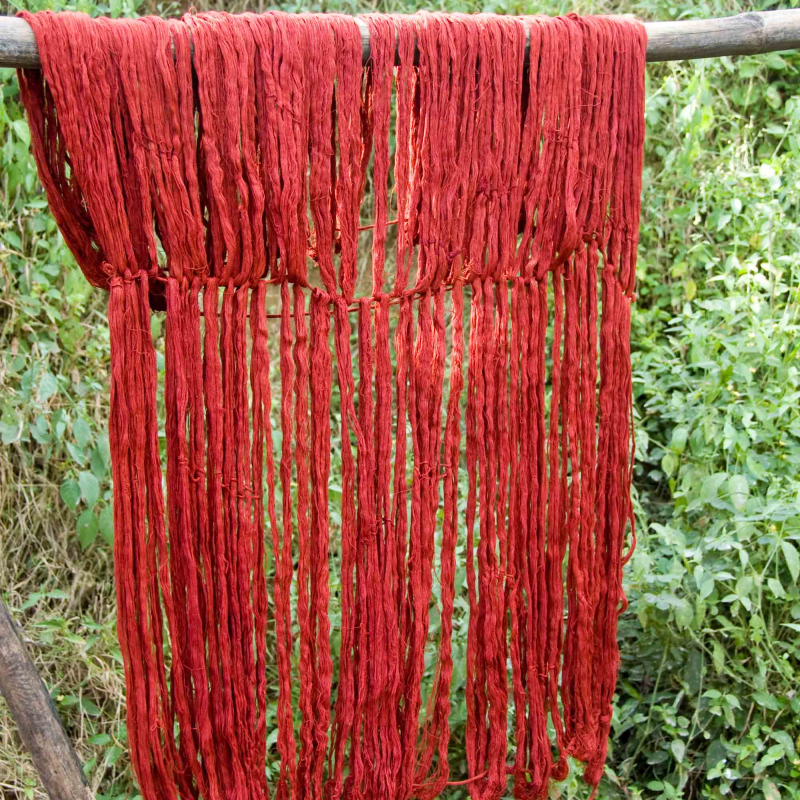Colours of Nature - Sustainable Dyeing with Aal (Morinda citrifolia)
With rapidly growing awareness regarding carbon footprints, ozone depletion and impending problems of global warming, there is a sense of urgency felt around the world to find solutions to problems of environmental degradation.
Renewable fashion and eco- friendly textiles are part of new design trends that are aimed at designing and producing products keeping in view environment and social responsibility. Use of natural dyes in coloring textiles has witnessed revival in the past few years.
Natural dyes are of plant or animal origin, but very few members of the animal kingdom produce substances which give out substantial coloring matter. The dyes of plant origin are also known as vegetal dyes. In India, approximately 500 species of plants are known to produce dyes, which are usually grown on marginal land and wasteland. The dyes are obtained from leaves, fruits, fruit skin or rind, bark, root bark or tree secretion, which are renewable resources. Some of the commonly used natural dyes are indigo, myrobolan, pomegranate fruit rind, red sandalwood, henna, saffron and safflower etc.
Natural dyeing in craft sector
A craft-based approach towards usage of natural dyes could play an important role in providing information about ingredients and processes that might then be adapted for large-scale, industry-oriented operations. In India, traditional methods are still usually used for dyeing with natural dyes, which has ensured more original and economic production of small quantities of textiles and become the USP of the craft.
Aal dyed and woven textiles are an example of this approach. These are used mainly as sari by the women of the tribal societies and as turban or shoulder cloth by their men. Bastar in Chhattisgarh and the neighbouring Koraput in Odisha, are home to the tribal culture and traditions nurtured by the artisans.
The Kotpad cluster is known for its traditional Aal (Morinda citrifolia) dyeing. Historically, the region is well known for its handicrafts, which have a distinctly developed identity as tribal in terms of material, techniques and style. Handlooms of the region have produced textiles mainly for the local consumption. Due to easy availability of alternate mill-made cheaper textiles, the handloom crafts of the region have suffered immensely, seriously affecting the livelihoods of traditional weaving community.
Medicinal Properties of Natural Dyes
It is well known that skin functions not only as a protective barrier, but also as a conduit for outside substances to enter the body. Researches have proved that skin takes up toxins and chemicals from clothing and the environment. Hence it has the ability to absorb herbs and medicines found in natural dyes in clothing. Knowledge of these facts has led to renewed interest in fabrics dyed in natural dyes and herbs and plant extracts.
It has been recorded in Indian historical texts that Aal (Morinda citrifolia), madder (Rubia cordifolia) and indigo (Indigofera tinctoria) had cooling effects and hence the fabrics dyed with these coloring agents were used as head cloth or clothing especially by people who were involved in occupations which required them to be in the sun for long hours.
Most parts of the Morinda citrifolia plant are reported to possess medicinal properties. The roots and leaves are used as a cathartic and febrifuge, and applied externally to relieve pain in gout or applied on wounds. Fruits are used for the treatment for spongy gums, throat complaints, dysentery and leucorrhoea. (Wealth of India, CSIR, 1962)
Dyeing with Aal (Morinda citrifolia)
Morinda citrifolia is also known as Indian mulberry. It is a tall tree with a straight trunk, with broad elliptical bright green leaves and white flowers . It was earlier cultivated throughout India but now Aal trees are grown mainly in Kalahandi and Malkangiri forests of Odisha.
The roots of Morinda citrifolia spread out and are not too deep in the ground. For dyeing, the roots are chipped and given a preliminary steeping in water. Red, maroon and chocolate shades are produced on mordanted cotton. When necessary precautions are taken, the dyeing power of Morinda excels that of madder.
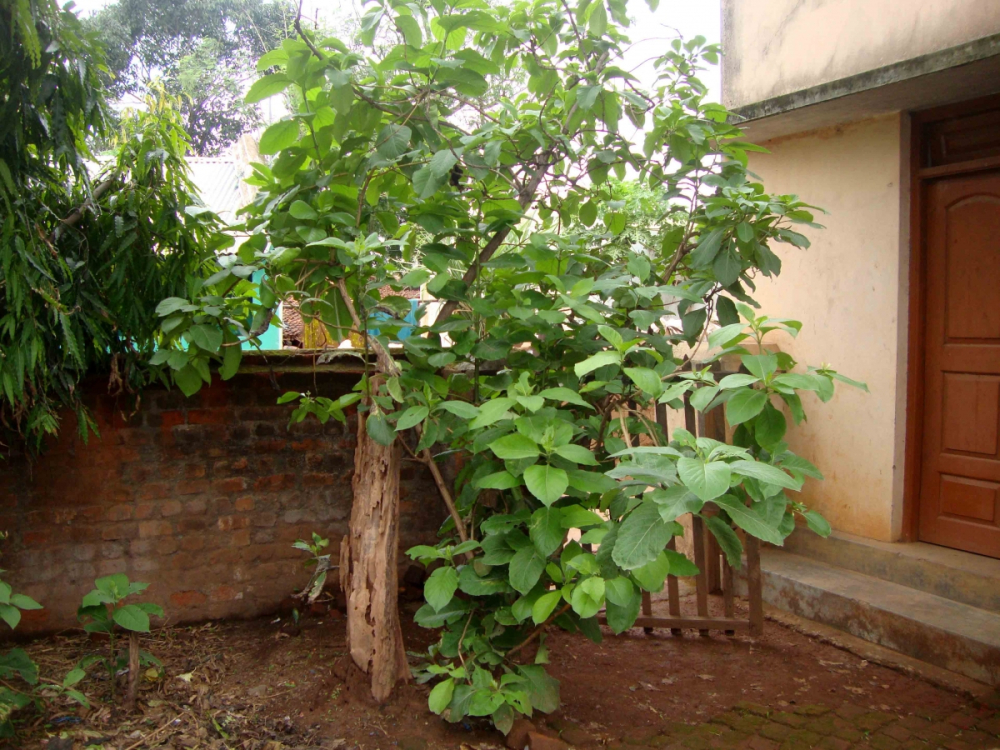
Aal tree
Panika women dye yarns with Aal, for the weaving activities in their own family as well as to sell dyed yarns to other weavers in Kotpad and the neighboring state of Chhattisgarh. It is a very lengthy, time consuming and tedious job.
The dyes in the form of root bark are sold by the Muria, Parjas and Gadbas tribes, in the weekly market, haat. The dried roots of Aal are washed thoroughly and dried in the sun on the streets. The dried bark is then either taken to a flour mill for milling or milled at home in hand-mill.
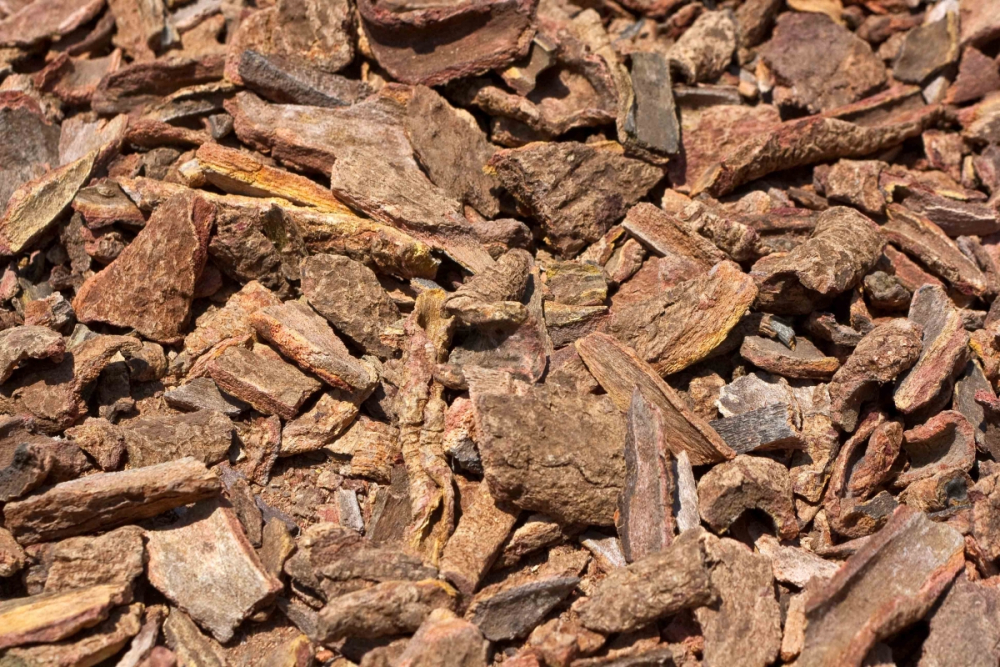
Bark of the roots of Aal tree
Normally one bundle of yarn, weighing around 4.5 to 5 kilos, is dyed in one lot. The peculiarity of dyeing with Aal is that the pre- dyeing treatment is long drawn and tedious and takes at least 12-15 days.
Each hank of yarn is mordanted by dipping in a solution made by mixing water with Castor oil (Ricinus communis linn). Hanks of yarns are completely immersed inside it and then squeezed.
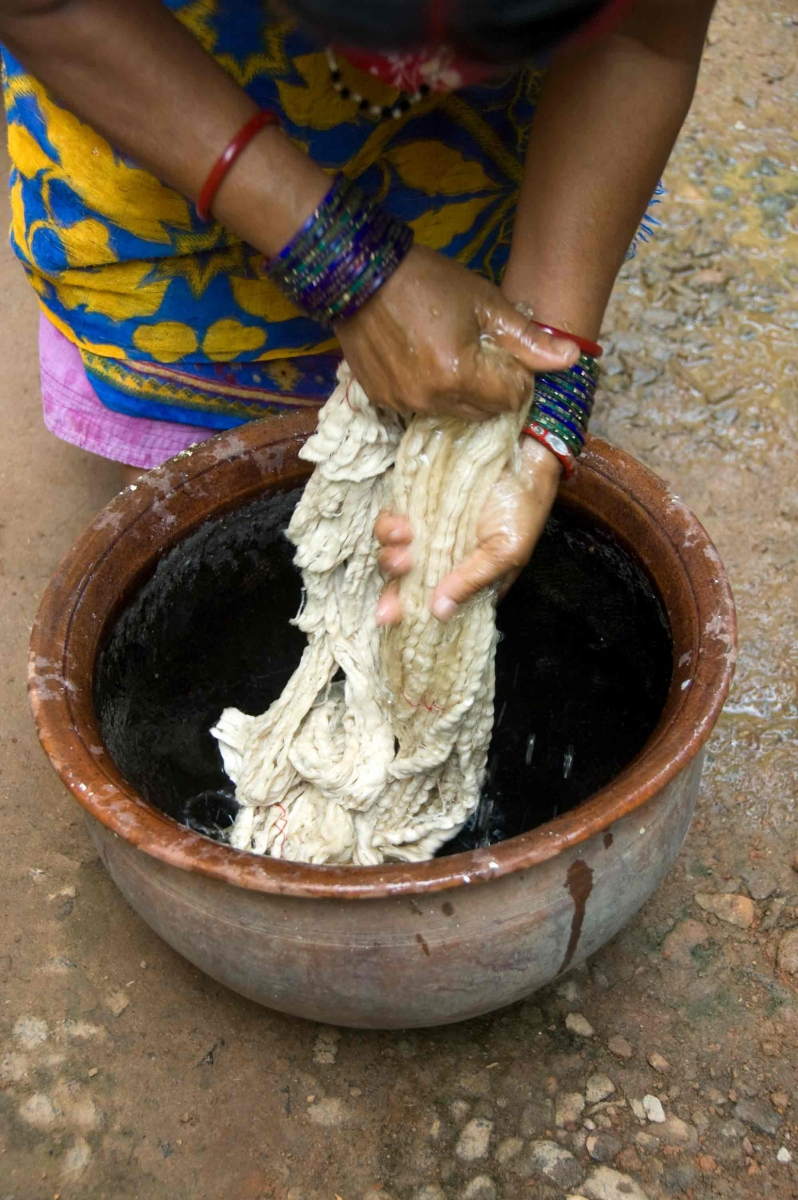
Rubbing castor oil and water into yarns
They are placed on a wooden plank to be rubbed by stamping with feet for better penetration of the oil. The process is repeated till the yarns are completely saturated and soft.
In the same pot, a semi- solid solution of cow dung is made with water to make into a paste of running consistency. Yarns are dipped into the solution and again the extra solution is squeezed out.
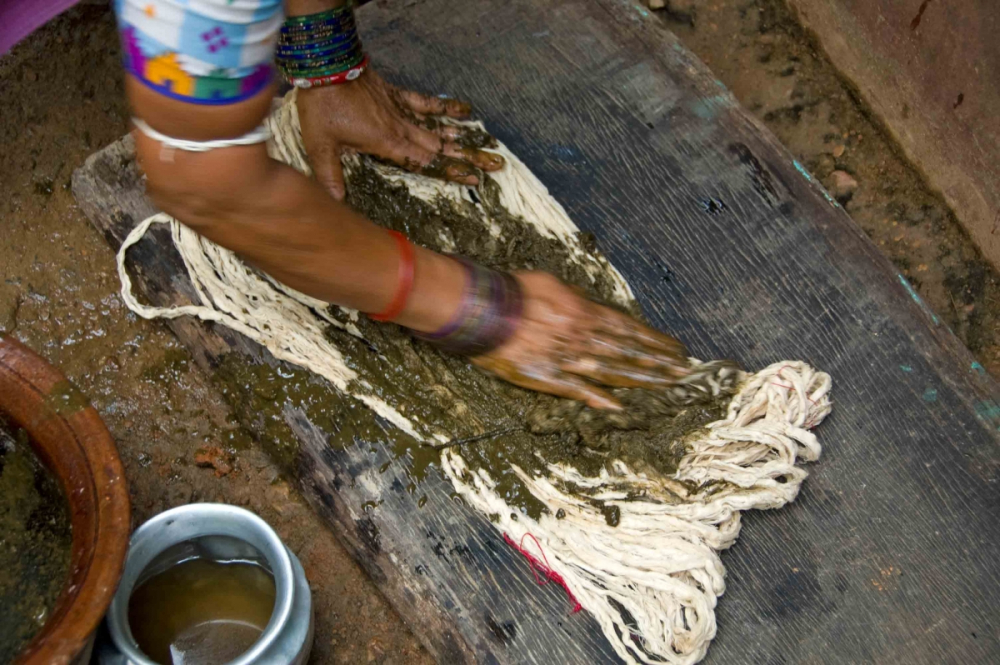
Rubbing Cow-dung gobar on Yarns
Some more cow dung solution is applied on the hanks by hands before they are spread on the bamboo rods for drying in the sunlight.
Ash washing process- In a separate container ash from the kitchen hearth is mixed well in water and is kept overnight. The ash settles down on the base of the container. The clear water from the top is taken out in the earthen pot. Cow dung coated dried yarns are sprinkled with Kharpani and are stamped again with the feet on the wooden plank.
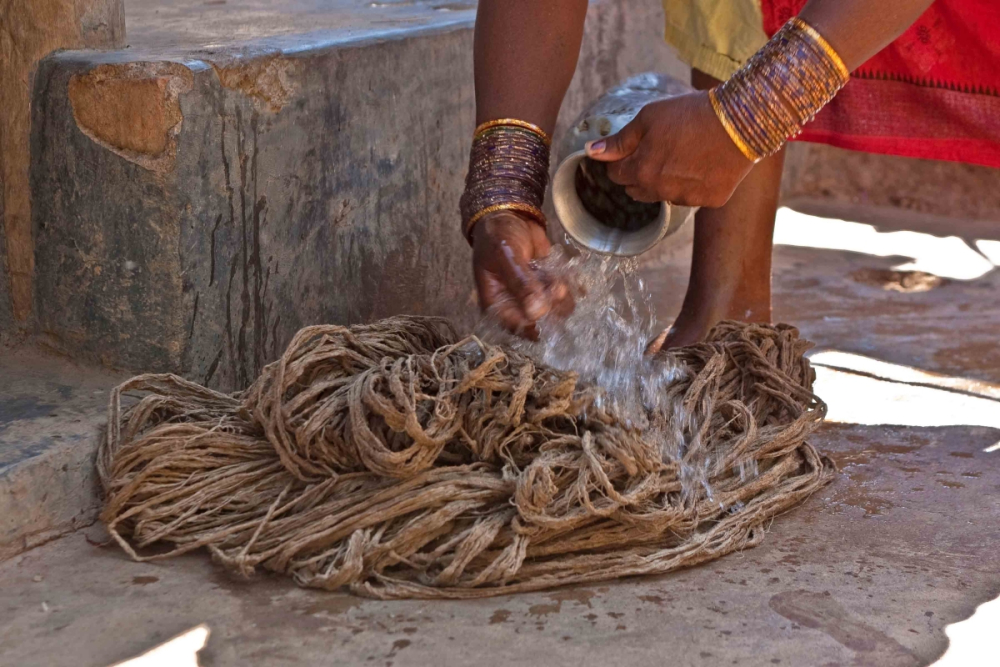
Sprinkling ash water on cotton yarns
The hanks are then dried in the sunlight. This process is repeated two or three times daily till foam starts oozing out, on application of kharpani. This is an indicator that the yarns are now receptive to take up dye.
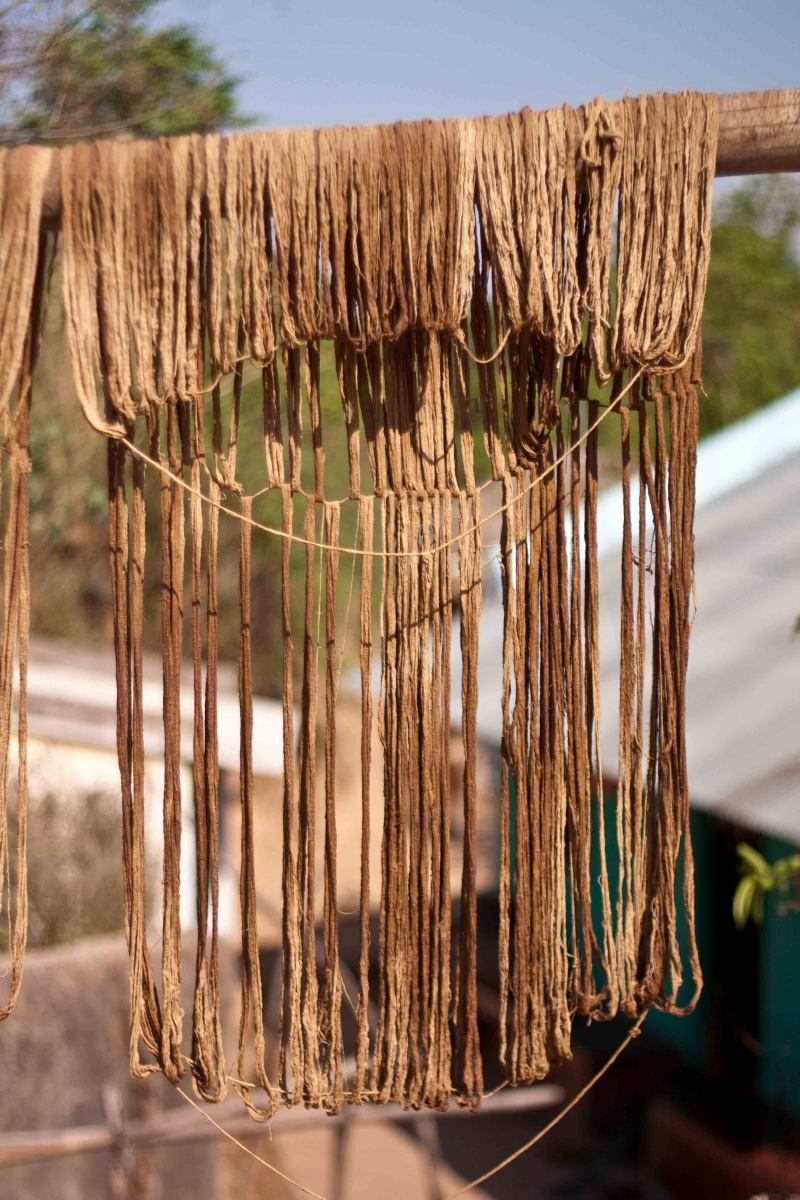
Drying of yarns in sunlight
Dyeing with Aal powder- For dyeing, Aal powder is added to the boiling water in a wide mouthed large earthen vessel, to mix thoroughly. The sun bleached yarns are then dipped in the dye bath and rubbed with hands to spread water and Aal powder into the hank .
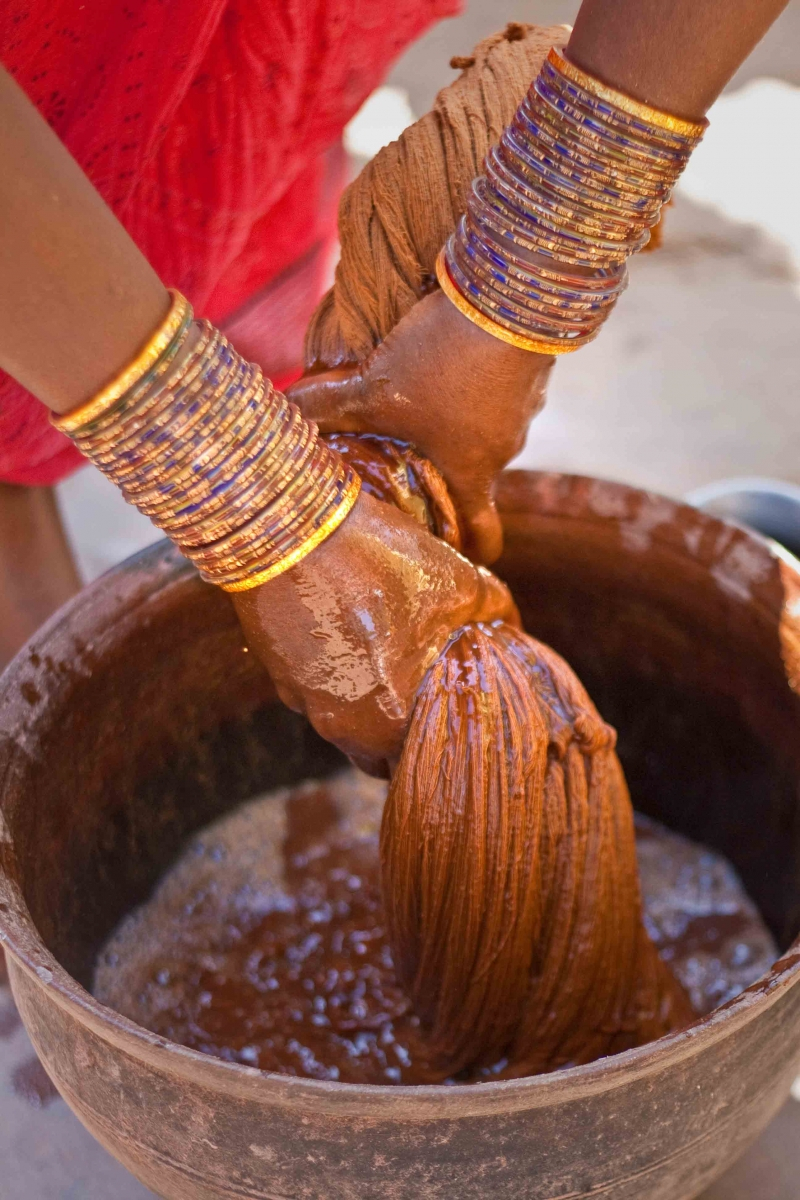
Dipping processed cotton yarns into pot containing Aal dye
Additional Aal powder mixed with hot water is then poured into it. The yarns are again kneaded for 10 to 15 minutes and then the pots are kept in bright sunlight for the whole day ensuring the yarns are completely immersed in dye. Next morning the pots are placed on fire to boil until the water evaporates .
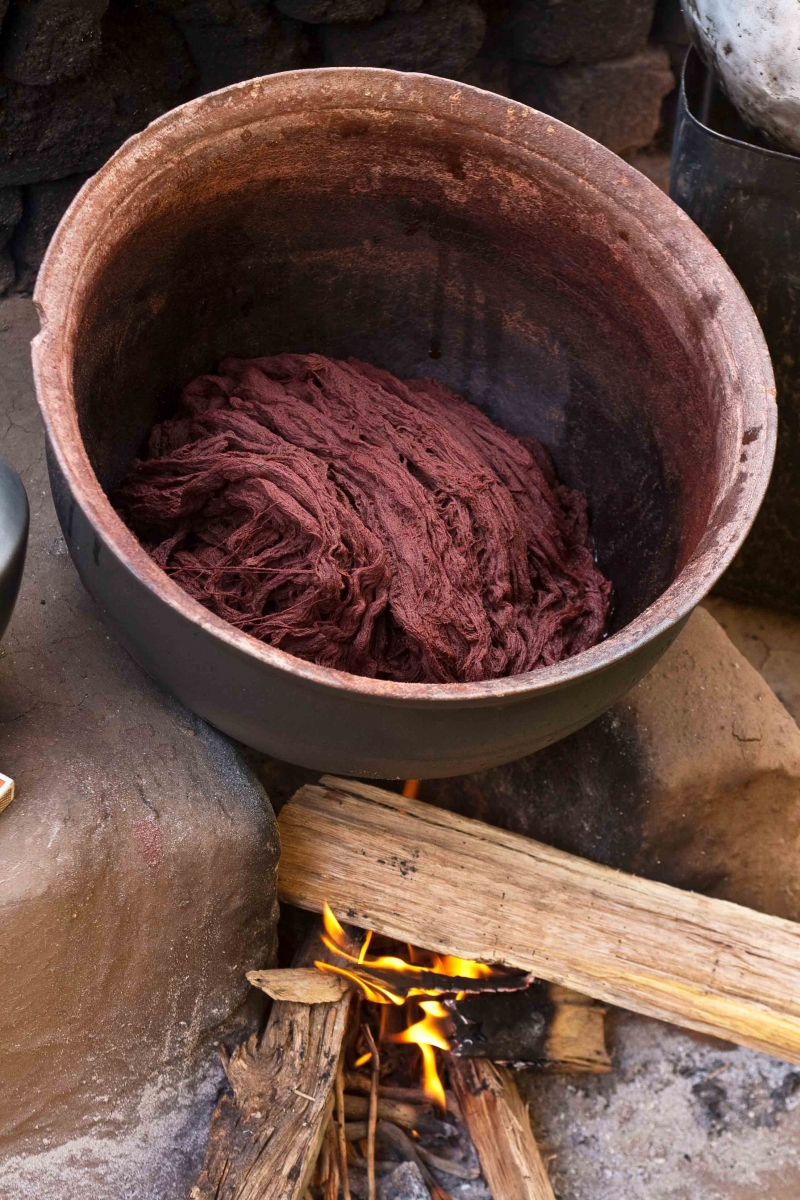
Boiling of Handi till the water evaporates
Finally the yarns are washed at the water bodies, located on the outskirts of the village. The desired shade does not actualize immediately. For deeper shades hanks are dyed again and the process is repeated till the required shade is achieved. Normally, yarns are dyed with Aal twice to achieve rich and bright terracotta hue.
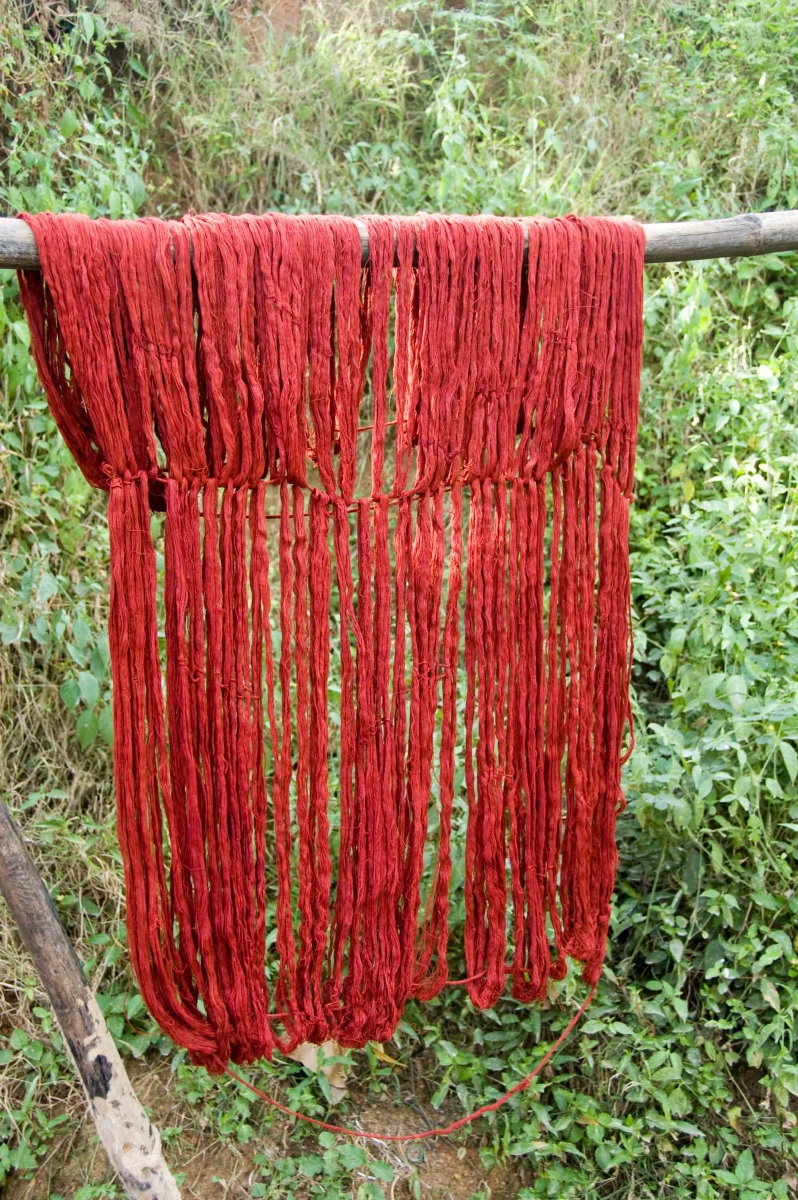
Aal dyed cotton yarns
For deeper shade, the yarns are again dipped in Aal dye solution and boiled. For dark coffee shade, loha ghoua (iron fillings) are used in the third dyeing solution along with Aal dye. Finally the yarns are washed at the pond outside the village by beating on a stone. Then they are dried to be stored for selling or weaving.
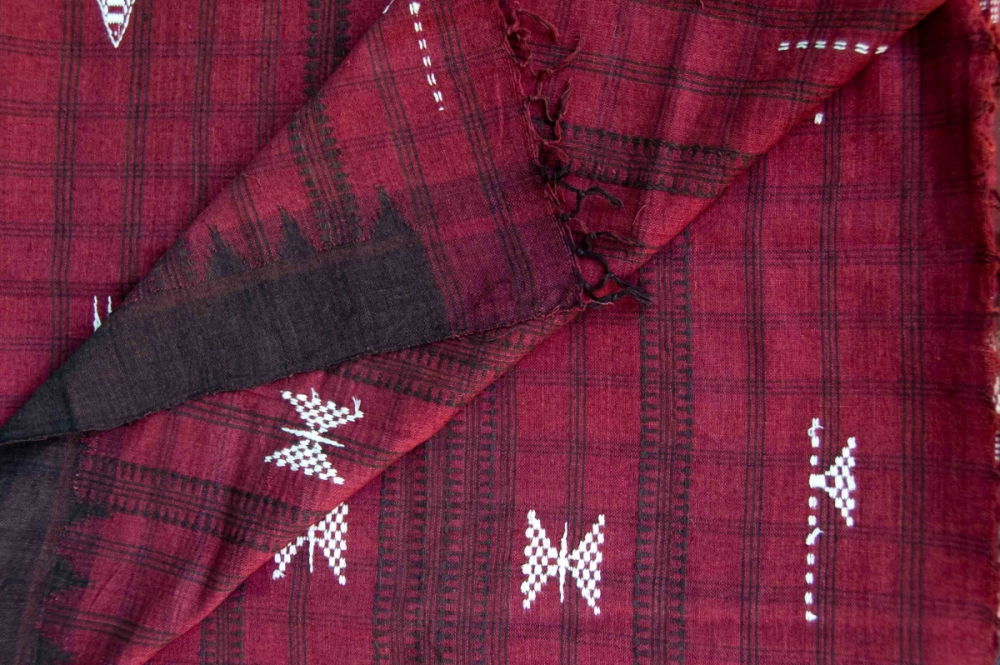
Sari with two shades of Aal dyed yarns
Thus, after almost 25-30 days, one lot of cotton yarn gets dyed in the required shade, which not only has colour of Aal, but also dyers skill and hard work.
The continuity of Aal dyeing and handloom weaving in the region has been maintained and has remained untouched by chemicals, because it is an integral part of lives of Panika dyers and weavers of Kotpad in Odisha. The yarns are sold in the village market by Panika women in and around Kotpad and Jagdalpur in Chhatisgarh.
It was observed that the dyers of Aal dyers of Kotpad as well as weavers make complete use of all the material. They make cautious use of all resources, including water. The yarns were prepared for dyeing with cow dung and ash obtained from the kitchen hearth. Disposal of effluent was also taken care of. After dye extraction, the sludge is either composted or utilized as fuel. Complete environmentally safe discharge is possible by rural artisans and industry with low capital investment. The need of the hour is to build awareness about the challenges to the environment and highlight the role of indigenous communities who are making tremendous efforts to safeguard natural resources.
References
Fletcher Kate, (2008) ‘Sustainable Fashion & Textiles-Design Journeys’, Earthscan, USA & UK
Gupta, D. & Gulrajani, M. L. (2001), ‘Natural Dyes – Convention Proceedings’ Indian Institute of Technology, Department of Textile Technology, New Delhi
National Institute of Sciences Communication, CSIR ‘The wealth of India-A Dictionary of Indian Raw Materials and Industrial Research’ Volume V: H-K
Singh Martand, Chishti Rta Kapur, Sanyal Amba,(1989) ‘Saris of India- Madhya Pradesh’, Wiley Eastern Ltd. and Amar Vastra Kosh, New Delhi
Singh, O. P. (2000), 'Natural dyes – pros and cons', The Indian Textile Journal, 109 (1)
Switch Asia (2010) ‘Sustainable textiles for sustainable Development’ -Market Research study-India.
This content has been created as part of a project commissioned by the Directorate of Culture and Archaeology, Government of Chhattisgarh, to document the cultural and natural heritage of the state of Chhattisgarh.
